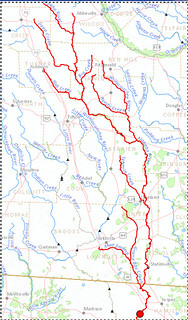GA-EPD’s Atlanta office sent
their entire sewage spill database for January 2017 in response to an open records request from WWALS.
 For the Suwannee River Basin,
I see only the known ones by Valdosta, plus a spill from Moultrie’s
Carlton Woods Lift Station into the Ocholockonee River,
with 36000 gallons, which matches
the amount we got directly from Moultrie.
That Ochlockonee spill is still not in the Suwannee River Basin.
For the Suwannee River Basin,
I see only the known ones by Valdosta, plus a spill from Moultrie’s
Carlton Woods Lift Station into the Ocholockonee River,
with 36000 gallons, which matches
the amount we got directly from Moultrie.
That Ochlockonee spill is still not in the Suwannee River Basin.
The Georgia Environmental Protection Division (GA-EPD) Southwest office in Albany handles the other sewage treatment operations in the Suwannee River Basin in Georgia, and that Albany office already told us by telephone that they had no reported spills other than the Tifton spill into the New River which I had gotten directly from Tifton. So I think we can conclude there were no other sewage spills into the Suwannee River Basin in Georgia in January 2017 other than the ones from Valdosta and Tifton.
Interestingly, Valdosta with its 2.2 million gallon Withlacoochee Wastewater Treatment Plant (WWTP) leak (and three manhole spills) was not the winner. Continue reading








